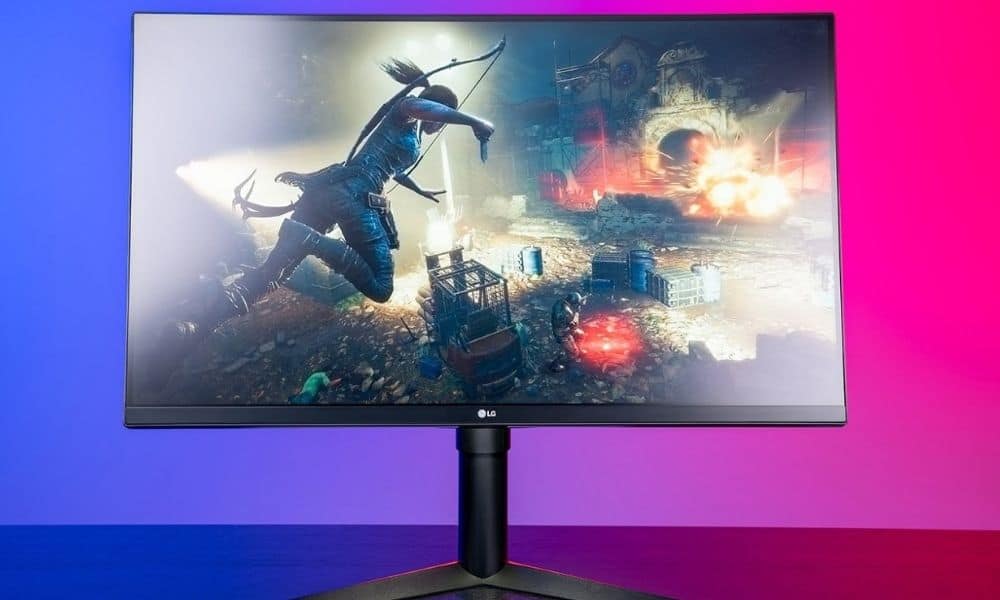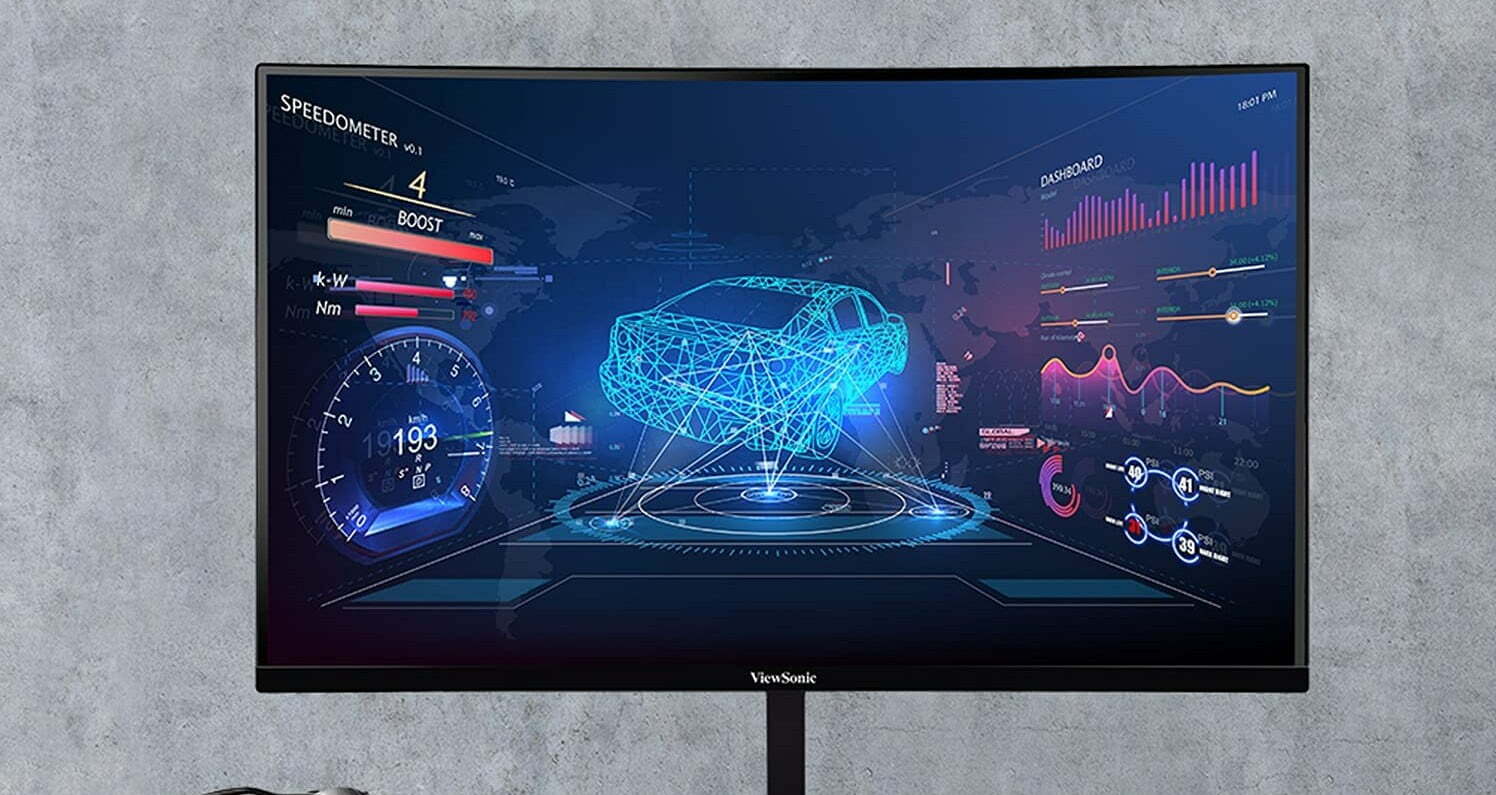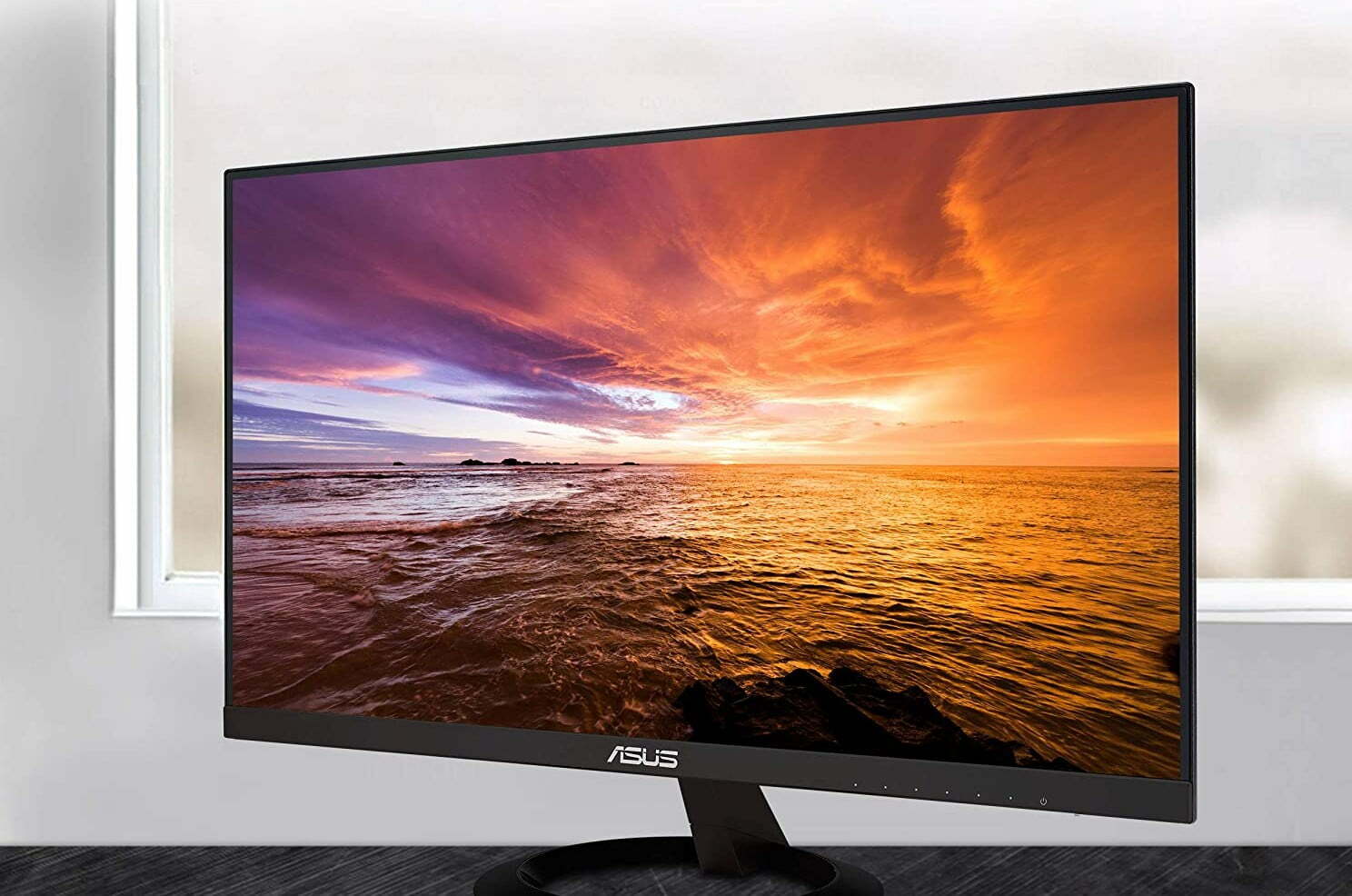When buying the best computer monitor it’s crucial to know what to look for. This starts with deciding whether you want a monitor for day-to-day use, gaming, or professional use. From there, you can consider features like size, resolution, and more to choose the best computer monitor model for you.
Key Takeaways:
- Choose the type of monitor based on how you plan to use it.
- Size and resolution are the most important features for most people.
- Gamers need to consider refresh rate and response time.
Tips for Buying a Monitor
1. Know the Different Types of Monitors
Understanding the different types of monitors available is the first step in choosing the best one for you. Most monitor features are catered to three main usages: general use, gaming, and professional.
- Related Post: What is a Monitor?
- Related Post: What is the History of Computer Monitors?
General Use
General use monitors are the most common type of computer monitor. These displays are ideal for day-to-day computing tasks like word processing, internet browsing, streaming, and the like. These displays are ideal for home use, as business monitors, and for students. They’re generally budget-friendly and are around 24-inches in size. Most general use screens have at least 1080-pixel resolution, which is HD, so you can enjoy crisp images.
Tip: General use monitors are the most common type of computer monitor
Gaming
Gaming monitors require high performance, including quick response times and a minimum refresh rate. Higher refresh rates ensure that fast-moving imagery won’t blur. The sweet spot for a serious monitor for gaming is one that has a 120Hz refresh rate. Hardcore gamers will look for screens with an even higher refresh rate of 144Hz or 240Hz. Gaming displays tend to be larger — a 27-inch monitor is typical. These types of monitors most commonly have 1920 x 1080 full HD resolution, though this can go up to 4K and even 8K.
Tip: Gaming monitors require high performance, including quick response times and a minimum refresh rate
Professional Grade
Professional grade monitors are used by photo, video, and graphics professionals. These types of monitors are designed to deliver the most accurate colors and detailed images for professional users. Color quality and color temperature are very important, so it’s essential that these displays have great dynamic range and a high screen resolution of at least 2560 x 1440-pixels. A screen display like this has advanced technology that isn’t needed for most consumers.
Tip: Professional grade monitors are used by photo, video, and graphics professionals
Warning: A screen display like this has advanced technology that isn’t needed for most consumers.
- Related Post: How do Computer Monitors Work?
2. Consider the Display Features
Once you determine the type of monitor that suits your needs, you can look at different features of the display that affect its quality and performance. Plus, your display works better once you understand how to calibrate your computer monitor using the right software.
Size
The size of a display is the diagonal measurement from one corner to another. The best way to decide on screen size is by considering how much space you have, how close you sit to the screen, your usage, and the price range you’re looking for. Start by looking at screens that are 21 to 27-inches large. This is a good range to start in to get a sense of quality and price differences. Most general users find a screen of 24 or 25-inches ideal, whereas gamers prefer something 27-inches or larger.
Tip: The size of a display is the diagonal measurement from one corner to another
Resolution
The majority of monitors available have 1080-pixel full HD resolution. This will deliver a picture that is clear and crisp enough for most common usage. It is not recommended to buy anything with a lower resolution than 1080. 4K resolution, also known as UHD or Ultra HD, is becoming increasingly popular. These 3840 x 2160-pixel resolution monitors are great for gaming and watching 4K videos. 4K resolution is, for all intents and purposes, the highest you need, even though 8K resolution screens are starting to become available.
Warning: It is not recommended to buy anything with a lower resolution than 1080, and if you can’t afford a monitor with 1080 or better, you may find it more cost-efficient to build a PC monitor yourself.
Flat vs. Curved
Flat-screen monitors are the standard type of screen. Curved monitors have become increasingly popular because they improve wide viewing angles and are designed to give users a more immersive viewing experience, which can be great for gaming. Some users may not be as comfortable with the viewing experience on a curved screen. Be sure to try out different monitor types to see how your eyes adjust to the experience. Additionally, curved screens cost at least 25-percent more than a comparable flat-screen model.
4. Check Connections and Compatibility
Before you buy your monitor, it’s essential to make sure that it’s compatible with your computer or laptop. Check the display’s input and output connectors as well as any potential system requirements it may have.
Warning: Before you buy your monitor, it’s essential to make sure that it’s compatible with your computer or laptop
Video Connectors
HDMI, DisplayPort, and USB-C are the three most common current connector types for monitors. Of the three, HDMI cables and ports are the most prevalent. HDMI allows for fast transmission of both high-quality video and audio. DisplayPort connections are only found on higher-end gaming and professional monitors because they can transmit 8K resolution video. USB-C ports are versatile and useful if you are connecting a monitor to a laptop.
Tip: HDMI, DisplayPort, and USB-C are the three most common current connector types for monitors
System Requirements
While most consumer monitors are compatible with both Apple and PC operating systems, it is important to check. Some displays may require the installation of software or a driver that may not be compatible with your current computer’s operating system. You may need to update your system before you can use the monitor.
5. Choose the Monitor for Your Needs
Computer monitors come in an array of sizes with a wide range of features and screen technology. While it may be tempting to get the latest and greatest model, consider your needs based on the factors above. A professional-grade monitor with advanced features may be too complicated and intimidating for everyday use. Likewise, you’ll be unhappy if you purchase a monitor for gaming that doesn’t perform at a high enough level.
STAT:
Revenue in the PC Monitors & Projectors segment amounts to US$3,250m in 2021. The market is expected to grow annually by 0.73% (CAGR 2021-2025).
Sources:
https://en.wikipedia.org/wiki/List_of_common_resolutions
https://en.wikipedia.org/wiki/Computer_monitor
https://en.wikipedia.org/wiki/Display_resolution
https://store.hp.com/us/en/tech-takes/what-monitor-ports-do-i-need
https://www.consumerreports.org/computer-monitors/how-to-choose-a-computer-monitor/




































![Best BenQ Monitors in [year] 28 Best BenQ Monitors in 2026](https://www.gadgetreview.dev/wp-content/uploads/best-benq-monitor-image.jpg)
![Best ASUS Monitors in [year] 29 Best ASUS Monitors in 2026](https://www.gadgetreview.dev/wp-content/uploads/best-asus-monitor-image.jpg)
![Best Dell Monitors in [year] 30 Best Dell Monitors in 2026](https://www.gadgetreview.dev/wp-content/uploads/best-dell-monitor-image.jpg)
![Best HP Monitors in [year] 31 Best HP Monitors in 2026](https://www.gadgetreview.dev/wp-content/uploads/best-hp-monitor-image.jpg)
![Best Lenovo Monitors in [year] 32 Best Lenovo Monitors in 2026](https://www.gadgetreview.dev/wp-content/uploads/best-lenovo-monitor-image.jpg)
![Best ViewSonic Monitors in [year] 33 Best ViewSonic Monitors in 2026](https://www.gadgetreview.dev/wp-content/uploads/best-viewsonic-monitor-image.jpg)
![Best Gigabyte Monitors in [year] 34 Best Gigabyte Monitors in 2026](https://www.gadgetreview.dev/wp-content/uploads/best-gigabyte-monitor-image.jpg)
![Best Monitors for PS4 Pro Gaming in [year] 35 Best Monitors for PS4 Pro Gaming in 2026](https://www.gadgetreview.dev/wp-content/uploads/best-monitors-for-ps4-pro-image.jpg)
![Best Monitor for Xbox Series X in [year] 36 Best Monitor for Xbox Series X in 2026](https://www.gadgetreview.dev/wp-content/uploads/best-monitor-for-xbox-series-x-image.jpg)
![Best Acer Monitors in [year] 37 Best Acer Monitors in 2026](https://www.gadgetreview.dev/wp-content/uploads/best-acer-monitor-image.jpg)
![Best MSI Monitors in [year] 38 Best MSI Monitors in 2026](https://www.gadgetreview.dev/wp-content/uploads/best-msi-monitor-image.jpg)
![Best SAMSUNG Monitors in [year] 39 Best SAMSUNG Monitors in 2026](https://www.gadgetreview.dev/wp-content/uploads/best-samsung-monitor-image.jpg)
![Best LG Monitors in [year] 40 Best LG Monitors in 2026](https://www.gadgetreview.dev/wp-content/uploads/best-lg-monitor-image.jpg)
![Best AOC Monitors in [year] 41 Best AOC Monitors in 2026](https://www.gadgetreview.dev/wp-content/uploads/best-aoc-monitor-image.jpg)
![Best Philips Monitors in [year] 42 Best Philips Monitors in 2026](https://www.gadgetreview.dev/wp-content/uploads/best-philips-monitors-image.jpg)
![Best Monitors For PUBG in [year] 43 Best Monitors For PUBG in 2026](https://www.gadgetreview.dev/wp-content/uploads/best-monitor-for-pubg-image.jpg)
![Best Stream Decks in [year] 44 Best Stream Decks in 2026](https://www.gadgetreview.dev/wp-content/uploads/best-stream-deck-image.jpg)
![Best Monitors for Streaming in [year] 45 Best Monitors for Streaming in 2026](https://www.gadgetreview.dev/wp-content/uploads/best-monitor-for-streaming-image.jpg)
![Best Monitors For Flight Simulator in [year] 46 Best Monitors For Flight Simulator in 2026](https://www.gadgetreview.dev/wp-content/uploads/best-monitor-for-flight-simulator-image.jpg)




















